Polynomials
2.1 Introduction
In Class IX, you have studied polynomials in one variable and their degrees. Recall that if
is a polynomial in the variable
A polynomial of degree 1 is called a linear polynomial. For example,
A polynomial of degree 2 is called a quadratic polynomial. The name ‘quadratic’ has been derived from the word ‘quadrate’, which means ‘square’.
where,
Now consider the polynomial
If
What is the value of
Also, note that
As
You have already studied in Class IX, how to find the zeroes of a linear polynomial. For example, if
In general, if
Thus, the zero of a linear polynomial is related to its coefficients. Does this happen in the case of other polynomials too? For example, are the zeroes of a quadratic polynomial also related to its coefficients?
In this chapter, we will try to answer these questions. We will also study the division algorithm for polynomials.
2.2 Geometrical Meaning of the Zeroes of a Polynomial
You know that a real number
Consider first a linear polynomial
From Fig. 2.1, you can see that the graph of

In general, for a linear polynomial
Now, let us look for the geometrical meaning of a zero of a quadratic polynomial. Consider the quadratic polynomial
Table 2.1
| -2 | -1 | 0 | 1 | 2 | 3 | 4 | 5 | |
|---|---|---|---|---|---|---|---|---|
| 6 | 0 | -4 | -6 | -6 | -4 | 0 | 6 |
If we locate the points listed above on a graph paper and draw the graph, it will actually look like the one given in Fig. 2.2.
In fact, for any quadratic polynomial
You can see from Table 2.1 that -1 and 4 are zeroes of the quadratic polynomial. Also note from Fig. 2.2 that -1 and 4 are the

Fig. 2.2
This fact is true for any quadratic polynomial, i.e., the zeroes of a quadratic polynomial
From our observation earlier about the shape of the graph of
Case (i) : Here, the graph cuts
The

(i)

(ii)
Fig. 2.3
Case (ii) : Here, the graph cuts the

(i)

(ii)
Fig. 2.4
The
Case (iii) : Here, the graph is either completely above the

(i)

(ii)
Fig. 2.5
So, the quadratic polynomial
So, you can see geometrically that a quadratic polynomial can have either two distinct zeroes or two equal zeroes (i.e., one zero), or no zero. This also means that a polynomial of degree 2 has at most two zeroes.
Now, what do you expect the geometrical meaning of the zeroes of a cubic polynomial to be? Let us find out. Consider the cubic polynomial
Table 2.2
| -2 | -1 | 0 | 1 | 2 | |
|---|---|---|---|---|---|
| 0 | 3 | 0 | -3 | 0 |
Locating the points of the table on a graph paper and drawing the graph, we see that the graph of
We see from the table above that
Let us take a few more examples. Consider the cubic polynomials

Fig. 2.6

Fig. 2.7

Fig. 2.8
Note that 0 is the only zero of the polynomial
From the examples above, we see that there are at most 3 zeroes for any cubic polynomial. In other words, any polynomial of degree 3 can have at most three zeroes.
Remark : In general, given a polynomial
Example 1 : Look at the graphs in Fig. 2.9 given below. Each is the graph of
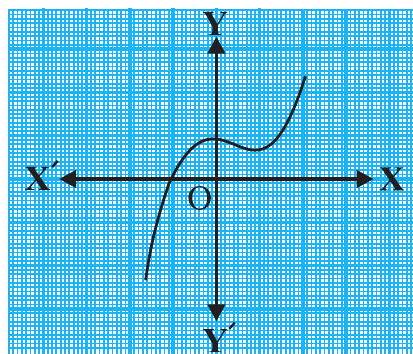
(i)
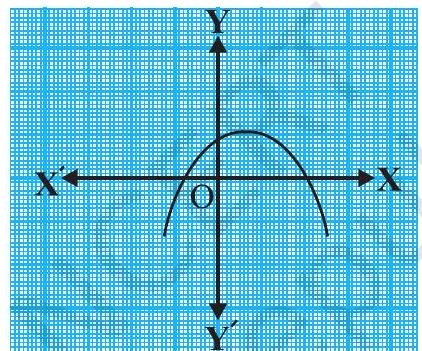
(ii)
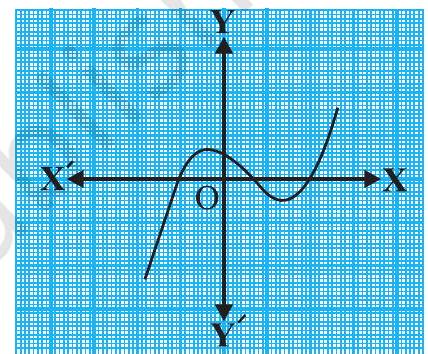
(iii)
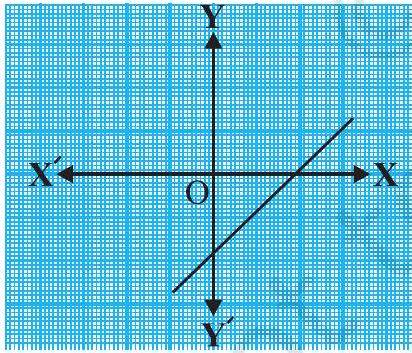
(iv)

(v)
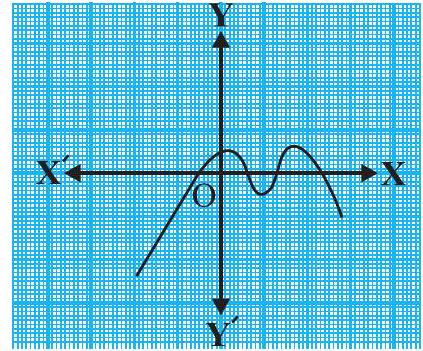
(vi)
Fig. 2.9
Solution :
(i) The number of zeroes is 1 as the graph intersects the
(ii) The number of zeroes is 2 as the graph intersects the
(iii) The number of zeroes is 3. (Why?)
(iv) The number of zeroes is 1 . (Why?)
(v) The number of zeroes is 1 . (Why?)
(vi) The number of zeroes is 4 . (Why?)
EXERCISE 2.1
1. The graphs of
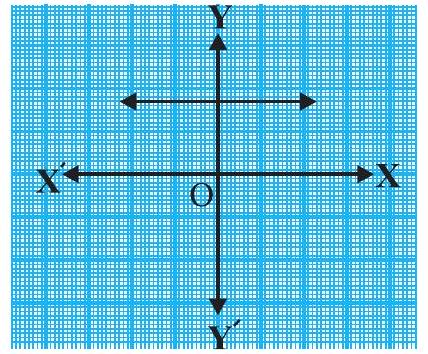
(i)
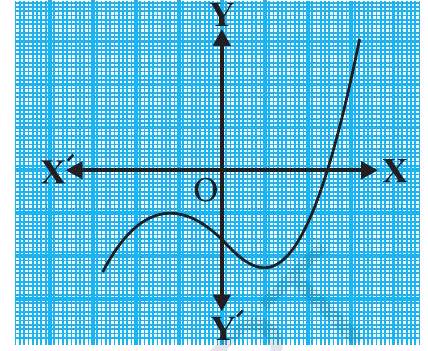
(ii)
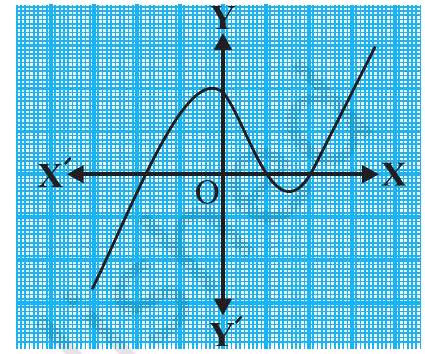
(iii)
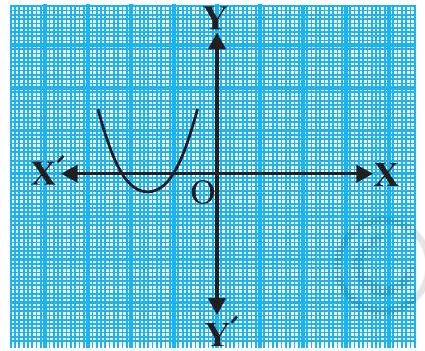
(iv)
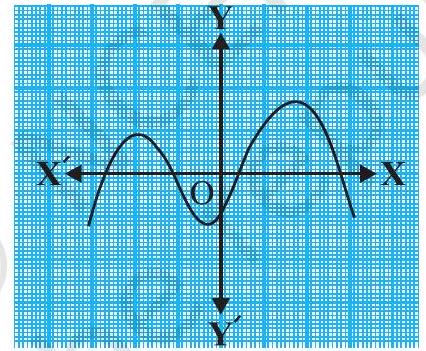
(v)
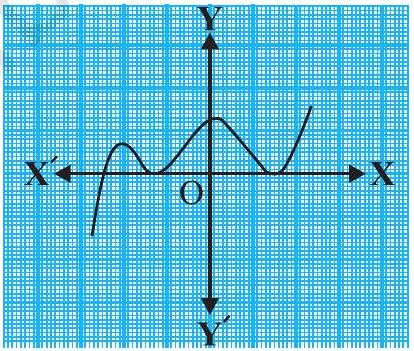
(vi)
Fig. 2.10
Show Answer
Solution
(i) The number of zeroes is 0 as the graph does not cut the
(ii) The number of zeroes is 1 as the graph intersects the
(iii) The number of zeroes is 3 as the graph intersects the
(iv) The number of zeroes is 2 as the graph intersects the
(v) The number of zeroes is 4 as the graph intersects the
(vi) The number of zeroes is 3 as the graph intersects the
2.3 Relationship between Zeroes and Coefficients of a Polynomial
You have already seen that zero of a linear polynomial
So, the value of
Let us take one more quadratic polynomial, say,
Hence, the value of
In general, if
Comparing the coefficients of
This gives
Let us consider some examples.
Example 2 : Find the zeroes of the quadratic polynomial
Solution : We have
So, the value of
Example 3 : Find the zeroes of the polynomial
Solution : Recall the identity
So, the value of
Therefore, the zeroes of
Now,
Example 4 : Find a quadratic polynomial, the sum and product of whose zeroes are -3 and 2 , respectively.
Solution : Let the quadratic polynomial be
and
If
So, one quadratic polynomial which fits the given conditions is
You can check that any other quadratic polynomial that fits these conditions will be of the form
Let us now look at cubic polynomials. Do you think a similar relation holds between the zeroes of a cubic polynomial and its coefficients?
Let us consider
You can check that
However, there is one more relationship here. Consider the sum of the products of the zeroes taken two at a time. We have
In general, it can be proved that if
Let us consider an example.
Example 53 : Verify that
Solution : Comparing the given polynomial with
Therefore,
So, we take
Now,
EXERCISE 2.2
1. Find the zeroes of the following quadratic polynomials and verify the relationship between the zeroes and the coefficients.
(i)
(ii)
(iii)
(iv)
(v)
(vi)
Show Answer
Solution
The value of
Therefore, the zeroes of
Sum of zeroes
Product of zeroes
(ii)
The value of
Therefore, the zeroes of
Sum of zeroes
Product of zeroes
The value of
Therefore, the zeroes of
Sum of zeroes
Product of zeroes
(iv)
The value of
Therefore, the zeroes of
Sum of zeroes
Product of zeroes
(v)
The value of
2. Find a quadratic polynomial each with the given numbers as the sum and product of its zeroes respectively.
(i)
(ii)
(iii)
(iv) 1,1
(v)
(vi) 4,1
Show Answer
Solution
(i)
Let the polynomial be
If
Therefore, the quadratic polynomial is
(ii)
Let the polynomial be
If
Therefore, the quadratic polynomial is
(iii)
Let the polynomial be
If
Therefore, the quadratic polynomial is
(iv) 1,1
Let the polynomial be
If
Therefore, the quadratic polynomial is
(v)
Let the polynomial be
2.4 Summary
In this chapter, you have studied the following points:
1. Polynomials of degrees 1,2 and 3 are called linear, quadratic and cubic polynomials respectively.
2. A quadratic polynomial in
3. The zeroes of a polynomial
4. A quadratic polynomial can have at most 2 zeroes and a cubic polynomial can have at most 3 zeroes.
5. If
6. If






